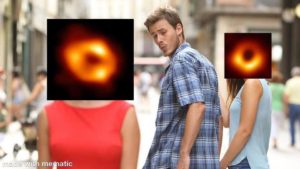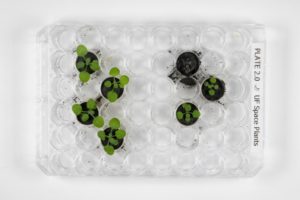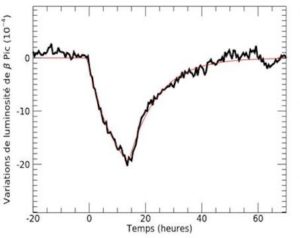The news of the month, actually of the year so far, is the first photo of the black hole at the heart of the Milky Way.

It’s been known for a long time that a supermassive hole is found at the centre of the Milky Way, because of the weird motion of stars around it. Sagittarius A* -that’s its name- is about 26,000 light years from here and weighs around four million times the Sun. Also, its size is such that if we put it in place of the Sun, it’d reach up to Mercury. One fun fact is that it consumes the mass of slightly less than one Earth per day. And now -like the first ever photo of a black hole, three years ago- it was photographed by the Event Horizon Telescope collaboration, which combines the power of eight telescopes spread around Earth.
In the photo, the black hole proper is the black area in the middle. In retrospect, this might sound obvious as it is something not visible. However, to be more precise, the black area is the shadow of the hole. (If you crave a better explanation, you can read the Ph-word post back from the first photo, which described things better.) The bright part comes from gas swirling around it, with some regions moving towards and others away from us.
Next stop: Sharper images by The Telescope over the next few years, even thought the blurry ones are cool as well.
🌑 🌒 🌕
Folks at the University of Florida checked to see whether plants could grow in soil from the Moon. And they found that yes. Life finds a way.
Said soil came from Apollo missions and the plants were tiny cress. However, their growth showed signs of stress (seriously, I couldn’t be making this up). Still, this could be the start of making future space missions a lot easier, at least if they have to feed humans.

🌕 🌘 🌑
Finally, a piece of space news with a faint personal touch. Astronomers using the TESS space telescope published the finding of thirty exocomets around the star Beta Pictoris, 64 light years away from us. Exocomets are, similarly to exoplanets, comets flying around stars other than our own.
Now, exocomets have managed to reach the mass media only a few times so far, so I’d say that in this sense it is news. But knowing about the existence of exocomets, even these specific exocomets, isn’t new; they have been known for a few years now, while evidence of course keeps amassing. Actually, as a science journalist I wrote about them last year for the Sky & Telescope magazine. So I can lazily copy here a small excerpt of that article instead of rewriting things:
“Are alien skies adorned by tails of comets and their trails? Do stargazers in other stellar systems enjoy the views of comets and meteors from their dust?
As far as we can tell, the answer is yes.
True, we don’t know whether alien stargazers actually exist. But we do know that alien comets exist. These exocomets are much like comets: small celestial bodies that orbit stars and release gas and dust, mostly through sublimation when they get close to the stars and heat up. Astronomers currently know of exocomets roaming the neighborhoods of four stars, and they’ve seen hints in the light of a few dozen more stars and white dwarfs.”
I’ll sign off by saying that Beta Pictoris is particularly good for this purpose, because of being a very bright star and because the plane of its stellar system happens to be vertical to us. So, every comet that will pass in front of the star will show up in our field of vision.

—
Do you want to receive one monthly reminder with links to the Ph-word posts? Join the mailing list.

always nature find a way to amaze us!!! who could believe, ten years ago , that actually plants can grow with soil from the moon!